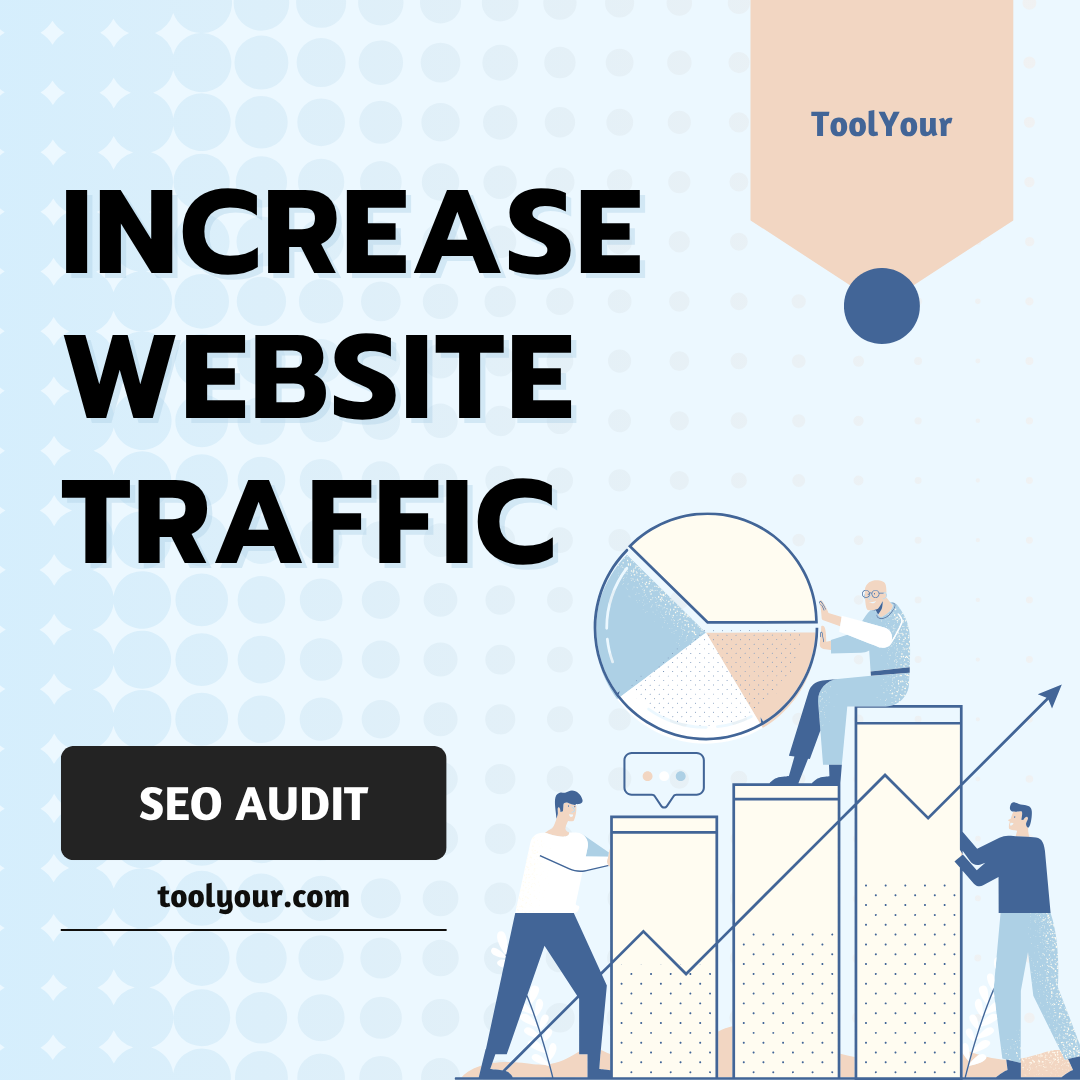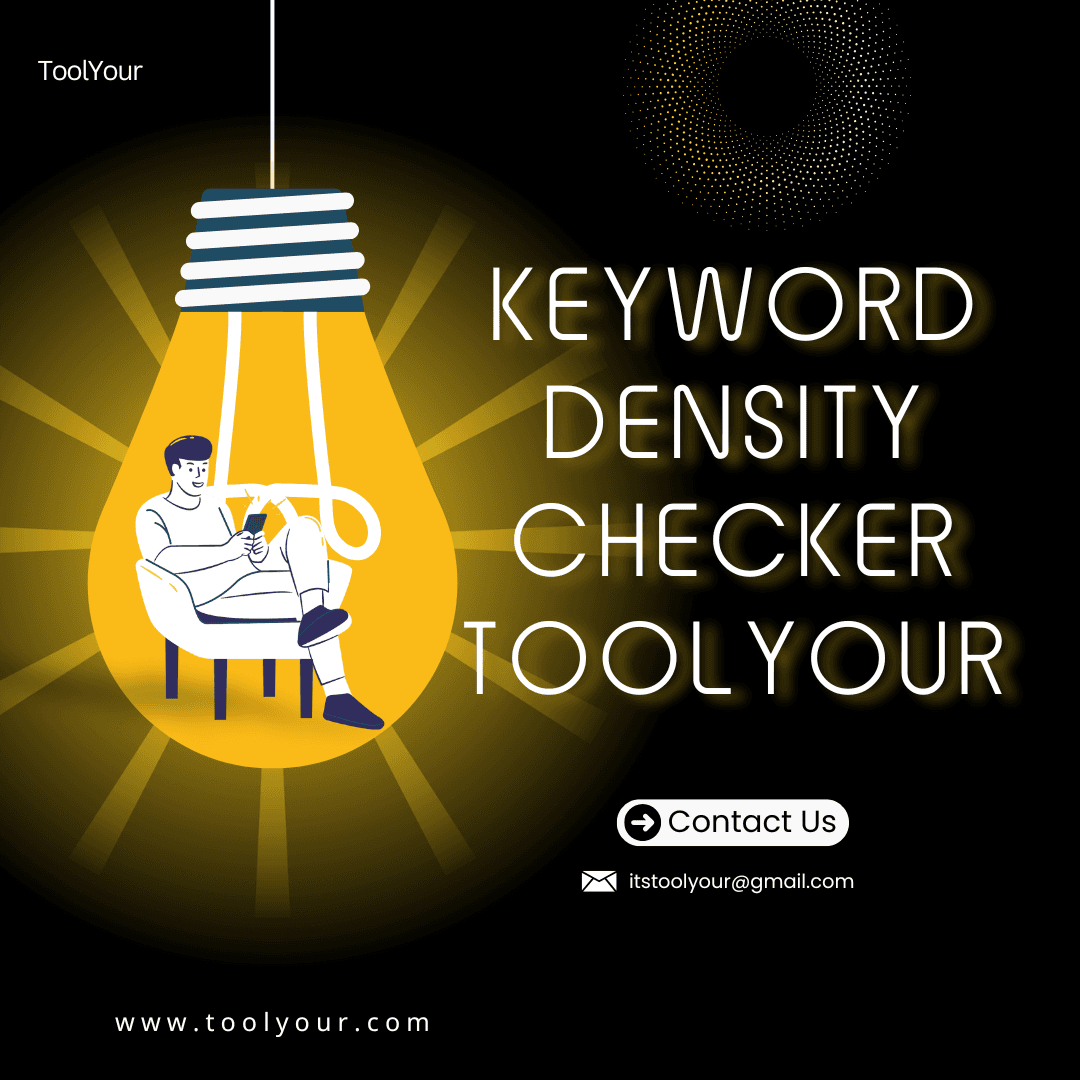In today's digital world, having a website is like having a shop on a very busy street. You want people to find your shop easily, right? Online, this means being easy to find on search engines like Google. This is where SEO (Search Engine Optimization) comes in. SEO is all about making your website friendly to search engines so it can rank higher in search results.
But how do you know if your website is doing a good job with SEO? How do you find what needs fixing? That's where SEO Audit Tools became super important. This article will take you on a journey to understand these powerful helpers. We'll explore when and why SEO Audit Tools first showed up, what people did before these tools existed, and how they help us now. Then, we'll introduce our own special tool at ToolYour and show you how it can make improving your website much simpler.
The Beginning: How SEO Audit Tools Were Born
Imagine the internet back in the early days of search engines, perhaps in the late 1990s and early 2000s. People were just starting to figure out how to make their websites show up higher when someone searched for something. Back then, SEO was much simpler. Search engines mainly looked at basic things like:
Keywords:
Did the website mention the right words?
Links:
Did other websites link to this one?
Website Speed:
Did the website load quickly?
As more and more websites appeared online, the rules (or "algorithms") that search engines used to rank websites became much more complex. It wasn't enough to just have a few keywords; suddenly, many more things started to matter, like:
How fast a page loaded on a phone.
If a website was easy to use.
If the content was truly helpful and trustworthy.
If there were any technical problems hiding in the website's code.
Website owners and SEO experts quickly realized they needed a way to check their websites for all these different things. It was no longer possible to just "guess" what was good or bad for SEO. They needed a detailed checklist, a report card, to see what was working and what needed fixing.
Why Were These Tools So Needed?
The strong need for SEO Audit Tools grew for several key reasons:
To Understand Complex Rules:
Search engine rules kept changing and getting more complicated.
It was hard for one person to keep track of everything Google cared about. An audit tool could check many things at once.
To Find Hidden Problems:
Websites can have "hidden" issues in their code or setup that hurt their ranking.
These might be things like duplicate content (the same text on different pages) or broken links. An audit tool could uncover these.
To Save Time:
Checking every single SEO factor by hand for even a small website would take days, maybe weeks? An automated tool could do it in minutes.
To See the Whole Picture:
SEO isn't just one thing; it's many small things working together. An audit tool could give a full report, showing strengths and weaknesses across the whole website.
To Compete Better:
If you didn't know what was wrong with your website's SEO, you couldn't fix it. This meant you couldn't compete with websites that were already doing their SEO well.
Because of these growing demands, smart people started thinking about ways to build tools that could automatically scan a website and give a detailed report on its SEO health. This was the birth of SEO Audit Tools.
Who First Made Them and When?
It's not easy to say just one person or company "introduced" the very first SEO Audit Tool. Like many internet innovations, they likely grew over time, starting from simple ideas.
In the early 2000s, as SEO became a real job, SEO professionals and agencies were the first to really need these tools. They probably started by making their own long checklists. Then, they might have used simple computer programs to check for one or two things, like if a website had a meta description (a short summary of the page).
As the years went by, especially from the mid-2000s onwards, dedicated SEO software companies began to emerge. These companies started building more complete tools that could check many SEO factors at once. They gradually added more features as search engine algorithms evolved.
Early SEO Audit Tools weren't always free or easy to use. They were often expensive and aimed at big businesses or expert SEO agencies. But over time, as the demand grew, more user-friendly and even free versions started to appear, making SEO auditing available to everyone, from small business owners to bloggers.
The popularity of these tools grew hugely with major Google updates, like Panda (which focused on content quality) and Penguin (which focused on link quality). These updates made website owners realize that they had to check their SEO health regularly, and audit tools became the go-to solution.
Before the Tools: How People Checked SEO
Before we had smart Free Website SEO Audit Tools, checking a website's SEO was a tough, manual, and often incomplete job. Imagine trying to be a detective for every tiny detail of a website by hand? Here's what people used to do:
Manual Checklists and Spreadsheets:
This was the most common method.
SEO experts would create long lists of things to check (like "Does this page have a title tag?", "Is the content long enough?", "Are there images?").
Then, they would visit each page of a website and manually mark off items on their list in a spreadsheet. This was very slow and boring, especially for websites with many pages.
Looking at Page Source Code:
For more technical checks, people would open the "View Page Source" option in their web browser. This showed all the computer code (HTML) that makes up the webpage. They would then manually look through the code to find specific SEO elements, like
<title>tags,
<meta name="description">tags, or
<h1>headings. This required knowing a lot about code and was very time-consuming.
Using Browser Extensions (Limited):
Some very basic browser add-ons started to appear. These might show one or two simple SEO details for the page you were currently viewing, like the title tag or meta description. But they couldn't scan a whole website or give a full report.
Running Basic Speed Tests:
They would use very simple online tools or even stopwatch timers to measure how fast a page loaded. This was usually done on a single page, not across the whole site.
Manual Link Checking:
To find broken links or see who was linking to their site, people would often have to use separate, very basic tools or even click through links one by one. This was a nightmare for larger sites.
"Eye-Balling" Content:
For content quality, it was often just a guess. People would read the content and decide if it "felt" well-written or if keywords were used enough. This was very subjective and could miss many issues.
No Full Report:
The biggest problem with all these old methods was that they almost never gave you a complete picture. You might find a few issues, but it was incredibly hard to see how all the different SEO parts worked together or what your biggest problems were across your whole site. It was like trying to fix a complex machine by only looking at one tiny part at a time.
These old ways were very slow, easy to make mistakes with, and simply couldn't keep up with the growing size and complexity of the internet. The strong need for a fast, accurate, and automatic way to check all aspects of a website's SEO health was very clear. This is exactly what SEO Audit Tools stepped in to do. They totally changed how website owners and marketers approached improving their online presence.
Our Free Website SEO Audit Tool: Your Smart Helper
Now that you understand the history and why these tools are so vital, let's introduce our very own Free Website SEO Audit Tool here at ToolYour. We've built this tool to be incredibly easy to use, yet powerful enough to give you all the important SEO information you need about your website.
Our tool is designed to cut through the confusion of SEO and give you a clear, organized report. It acts like a super-smart doctor for your website, checking its health and telling you exactly what needs attention to make it stronger and more visible online.
What Our Tool Does
At its core, our Free Website SEO Audit Tool visits your chosen webpage and performs a quick, but detailed, check of many important SEO factors.It then puts all this information into an easy-to-read report, so you don't have to be an SEO expert to understand it.
Think of it like this: If your website were a car, our tool would be the mechanic that does a full check-up. It looks at the engine (your code), the tires (your links), the paint job (your images), and tells you what's running smoothly and what might need a tune-up.
How Our Tool Can Help People
Our Free Website SEO Audit Tool offers many fantastic benefits for different kinds of people:
For Website Owners (especially small businesses and bloggers):
Easy Fixes:
Get a clear list of what's wrong and how to fix it, even if you're not a tech wizard. This helps you quickly make your site better.
Boost Visibility:
By fixing SEO issues, your website becomes more friendly to Google, which means it has a better chance of showing up higher in search results.
More visibility means more potential customers or readers.
Save Money:
No need to hire expensive SEO consultants for basic checks. Our free tool gives you valuable insights.
Stay Updated:
SEO rules change. Our tool helps you keep your site optimized with current best practices.
For SEO Professionals and Digital Marketers:
Quick Audits:
Perform fast initial audits for new clients or ongoing checks for existing ones. This saves a lot of time.
Spotlight Issues:
Quickly identify major SEO problems that need immediate attention.
Reporting:
Use the clear report to show clients what needs to be done and track improvements over time.
Competitive Edge:
Analyze competitor websites to understand their strengths and weaknesses.
For Content Writers:
Content Optimization:
See how well your articles are optimized for keywords, images, and readability.
Missing Elements:
Discover if your content is missing important SEO elements like good title tags or meta descriptions.
For Web Developers:
Technical SEO Checks:
Quickly verify technical SEO aspects of the website's code and structure.
Quality Control:
Ensure that new pages or website changes don't accidentally create SEO problems.
For Students and Learners:
Learn SEO in Practice:
A great way to see real-world SEO concepts in action and understand how different factors affect a website.
Analyze Websites:
Use it for projects to quickly gather data on website SEO performance.
In essence, our tool gives you a clear roadmap to improving your website's performance on search engines. It turns complex SEO ideas into simple, actionable steps.
Who Can Use This Tool?
The great thing about our Free Website SEO Audit Tool is that it's designed for everyone? You don't need to be an SEO guru or a computer programmer to use it.
Small Business Owners:
If you have a local shop, an online store, or offer services, this tool helps you attract more customers from Google.
Bloggers:
Want more people to read your awesome articles? This tool helps your blog posts rank higher.
Students:
Learning about digital marketing? This tool is a hands-on way to understand SEO.
Marketing Managers:
Need to quickly check many websites? This tool is your time-saver.
Anyone with a Website:
If you have a website and want it to perform better online, this tool is for you.
If you are looking for an easy, free way to understand and improve your website's search engine performance, our tool is the perfect fit.
How to Use Our Free Website SEO Audit Tool
Using our Free Website SEO Audit Tool is incredibly simple and designed for quick results. You'll get a detailed report without any complicated steps.
Here's your simple step-by-step guide:
Go to the Tool: Open your web browser and visit our Free Website SEO Audit Tool page. You'll find it at: https://toolyour.com/digital-tools/seo-audit(Please confirm this is the exact URL for your SEO audit tool. If it's different, please provide the correct one?)
Input Your Website URL: You'll see a clear input field on the page. This is where you tell our tool which website you want to check.
Important:
Make sure you enter the full website address, starting with
https://. For example, type
https://toolyour.comif you want to audit our homepage.
Start the Audit: Once you've typed or pasted the URL, simply press "Enter" on your keyboard or click on the "Search icon button" next to the input field.
Watch the Scan Happen: Our tool will then quickly visit that website, analyze many different SEO factors, and prepare a detailed report for you. This usually takes just a few moments.
Understanding Your Results: The 4 Tabs and Graphs?
Once the audit is complete, a new section will appear below the input field. This section is packed with helpful information, all neatly organized into four different tabs, plus a helpful graphical overview.
Tab 1: Overview (With Graphs?)
What it is:
This is your quick summary? It gives you a high-level look at your website's SEO health. It's like the cover page of your website's report card.
What you'll see:
Graphical Representation for Website Overview:
This will likely be a simple chart or diagram showing the overall health of your website at a glance. It helps you quickly understand the big picture.
SEO Score:
You'll get a score, usually out of 100, which tells you how well your website is doing with SEO.
A higher score means better SEO?
Performance Breakdown:
This will show you how your website performs in different key areas, perhaps broken down into categories like "On-Page SEO," "Technical SEO," or "Page Speed." This helps you see your strengths and weaknesses.
How it helps:
Get an instant understanding of your website's SEO health without digging into too many details. It's great for quick checks and for showing others your site's performance.
Tab 2: Metadata
What it is: This tab contains all the "meta details" of your webpage. These are hidden bits of information in your website's code that tell search engines what your page is about. They include:
Title Tag:
The main title of your webpage that appears in the browser tab and as the blue clickable link in Google search results.
Meta Description:
The short summary of your page that often appears under the title in search results.
Keywords (Meta Keywords):
While less important now, some older pages might still use these.
How it helps:
First Impression in Google:
Your title and meta description are often the first things people see in Google. This tab helps you make sure they are clear, inviting, and include your main keywords.
Missing or Too Long/Short:
It will tell you if these important pieces of information are missing or if they are too long or too short for Google's liking.
Optimize for Clicks:
Good titles and descriptions encourage more people to click on your website in search results.
Tab 3: Content Analysis
What it is:
This tab digs into the actual content on your webpage, looking at how it's structured and what elements it uses.
What you'll see:
Analysis for Images:
Checks if your images have "alt text" (descriptions that help search engines understand what the image is about and also help people who can't see the images). It might also check image file names.
Link Analysis:
Looks at the links on your page, checking for things like broken links, how many internal vs.
external links you have, and perhaps the anchor text (the clickable words) of those links. This gives you a good overview of your linking strategy.
How it helps:
Better User Experience:
Well-optimized images load faster and are more accessible.
Good links make it easy for users to navigate.
Improved SEO:
Proper image optimization and healthy links are big factors for search engine ranking.
Content Quality Check:
Helps you ensure your content has all the right elements for strong SEO.
Tab 4: Recommendations
What it is:
This is the most actionable tab? It takes all the problems found in the other tabs and gives you clear, simple advice on how to fix them. It's like having an SEO expert tell you exactly what to do.
What you'll see: A list of suggestions, often prioritized by how important they are. For example, it might say:
"Your Title Tag is too short. Make it at least 30 characters long."
"Some images are missing alt text. Add descriptive alt text for better SEO."
"You have a broken link on line X. Please fix it."
How it helps:
Clear Action Plan:
No more guessing? You get a step-by-step guide to improve your website's SEO.
Focus on What Matters:
The recommendations often highlight the most impactful changes you can make first.
Continuous Improvement:
Use this tab to regularly check your site and keep it in top shape.
The Future of SEO Auditing: What's Next for Our Tool?
Just like search engines are always changing, our Free Website SEO Audit Tool will also keep getting smarter and more helpful. We are committed to using the newest technology to give you even better insights and simpler recommendations.
In the future, you can expect to see advancements such as:
AI-Powered Insights:
We'll use smarter computer brains (AI) to understand not just what's on your page, but
why
it matters for SEO. This could lead to more detailed and personalized advice.
Competitor Comparisons:
Imagine being able to put in your website and a competitor's website, and our tool shows you side-by-side comparisons of your SEO strengths and weaknesses.
Real-Time Monitoring (for premium users):
For those who need constant checks, we might offer features that track your website's SEO health over time and alert you if new problems pop up.
More Deep Dives:
We could add more tabs or sections for very specific SEO areas, like checking your website's security, its loading speed for different devices, or how it uses structured data (special code that helps Google understand your content even better).
Simpler Language, Smarter Explanations:
We'll always strive to make our recommendations even easier to understand, even for people who are completely new to SEO.
Direct Integration with Other Tools:
We aim to make it easier for our audit tool to work with other website management systems or reporting tools you might already be using.
Personalized Action Plans:
Instead of just a list of recommendations, the tool might generate a more tailored plan for you, focusing on the most important fixes for your specific website.
These are just some ideas for how our Free Website SEO Audit Tool will grow. Our main goal is always to make it easier for you to understand and improve your website, helping you attract more visitors and achieve your online goals.
In conclusion, the Free Website SEO Audit Tool has become a crucial part of managing any website, evolving from the old, slow manual checks. Our tool at ToolYour brings this powerful ability right to your fingertips, giving you clear, organized insights into your website's SEO health. Whether you're a small business owner, a blogger, or an SEO professional, our tool is here to help you understand what needs fixing and how to make your website stronger on search engines. Try it today and start seeing your website climb those search rankings?
Check here: SEO Audit










